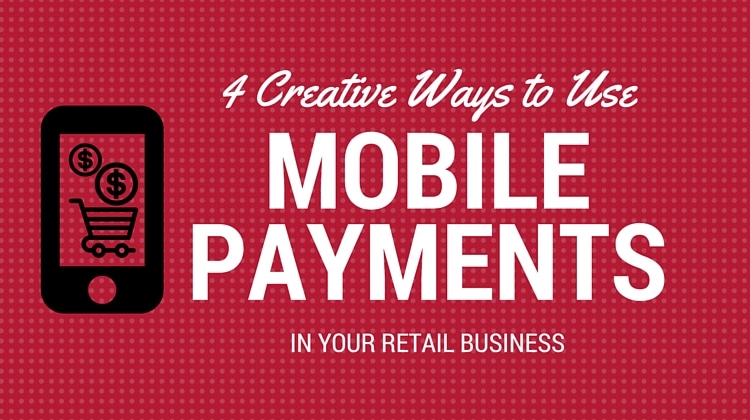
Technology is becoming more commonplace in various aspects of our lives. Smartphones have replaced watches, alarm clocks, and calendars, and they could begin to phase out traditional credit cards and credit card processing. Mobile payments have changed the way people are paying for goods and services in retail businesses, as well as how merchants are processing those payments.
Mobile payment refers to transactions made or received with a mobile device. This includes various mobile platforms customers use to pay for goods, such as direct mobile billing and mobile web payments. The term mobile payment also includes various technologies that allow merchants to accept and process payments via mobile devices.
These payments and processing options can be beneficial to both the consumer and the business because they are simple, secure, and quick. Here are some ways in which retailers can incorporate mobile payments into their businesses:
1. As a Way to Increase Check out Speed
For retailers, the key to a successful business is keeping customers interested. If the check out lines are long and customers feel the merchant is not doing enough to alleviate the backup, they may feel unappreciated and could lose interest in the brand. Mobile payments could be used to increase check out speed, ultimately leaving customers more satisfied with the experience.
Retail businesses could start accepting mobile payment transactions via smartphones, which typically require less time than traditional credit card processing, cash, and check payments. Having this option could allow mobile paying customers to get in and out of lines quickly, easing the process for all involved.
Additionally, retailers could use mobile swiping devices to divide long lines into smaller groups. Instead of checking out customers at only one stationary point of sale, mobile swiping devices would allow retailers to process mobile payments throughout the store with shorter lines. Retailers like Victoria’s Secret already are utilizing mobile swiping devices to decrease checkout time for customers.
2. As a Way to Process Payments on the Go
Small retail stores often find themselves doing more than simply selling out of a brick and mortar location. Independent retailers often are involved in trade shows, festivals, conferences, and other events that require them to sell merchandise while on the road. Accepting various types of payment essentially increases the ability to make a sale almost anywhere.
Retailers now can use smartphones, tablets, or other mobile devices to accept credit card and debit card payments no matter where they are located. This can be done through mobile credit card readers that fit into headphone jacks on mobile devices. These readers allow retailers to swipe credit cards and accept payments on the spot just as they would at a stationary point of sale. This small device could be a huge investment for businesses that travel and sell merchandise away from their retail locations.
3. As a Marketing Tool and Way to Connect with Customers
Businesses have used loyalty programs and rewards in the past to keep customers interested in their products. Now, with mobile payments on the rise, loyalty programs have become easier to implement and manage through mobile devices. Mobile wallets are a way to connect a retailer’s loyalty program directly to a consumer, giving them incentive to return to the store.
Additionally, mobile swipers can be used to build an inclusive email list of customers. Customers can add their information to the list and receive various updates from the retailer. Email marketing can be an effective tool to connect to customers and remind them of the products your business can offer as well as advertise sales, promotions, and other business events.
4. As a Way to Improve Customer Conversion
When a person enters a retail store, the goal is to convert the shopper into an actual paying customer. Companies use dozens of marketing techniques to entice shoppers and lure them into the store. However, once they are in the business, little is done to ensure a sale is made. Mobile processing could be one way to improve customer conversion.
Customers want an easy and simple check out, typically on their own terms. Each customer is different and so is the timing in which they want to pay for goods. For instance, in clothing stores, one customer may want to pay for something once he or she finds the item. Another may want to pay after the clothes have been fitted. Mobile credit card processors could help businesses capitalize on a sale when the customer is ready to pay rather than once he or she arrives at the register.
Conclusion
A modest portion of consumers currently are using mobile payments, but the numbers are expected to grow in coming years. Becoming familiar and comfortable with the technology now could be beneficial to retailers. With a degree of imagination, mobile payments could help businesses excel.
About the Author
Sarah Blanchard is a payments industry and marketing writer whose primary focus is in providing unique payment processing solutions for high risk businesses and credit repair credit card processing. She currently works as a writer for Soar Payments, LLC.